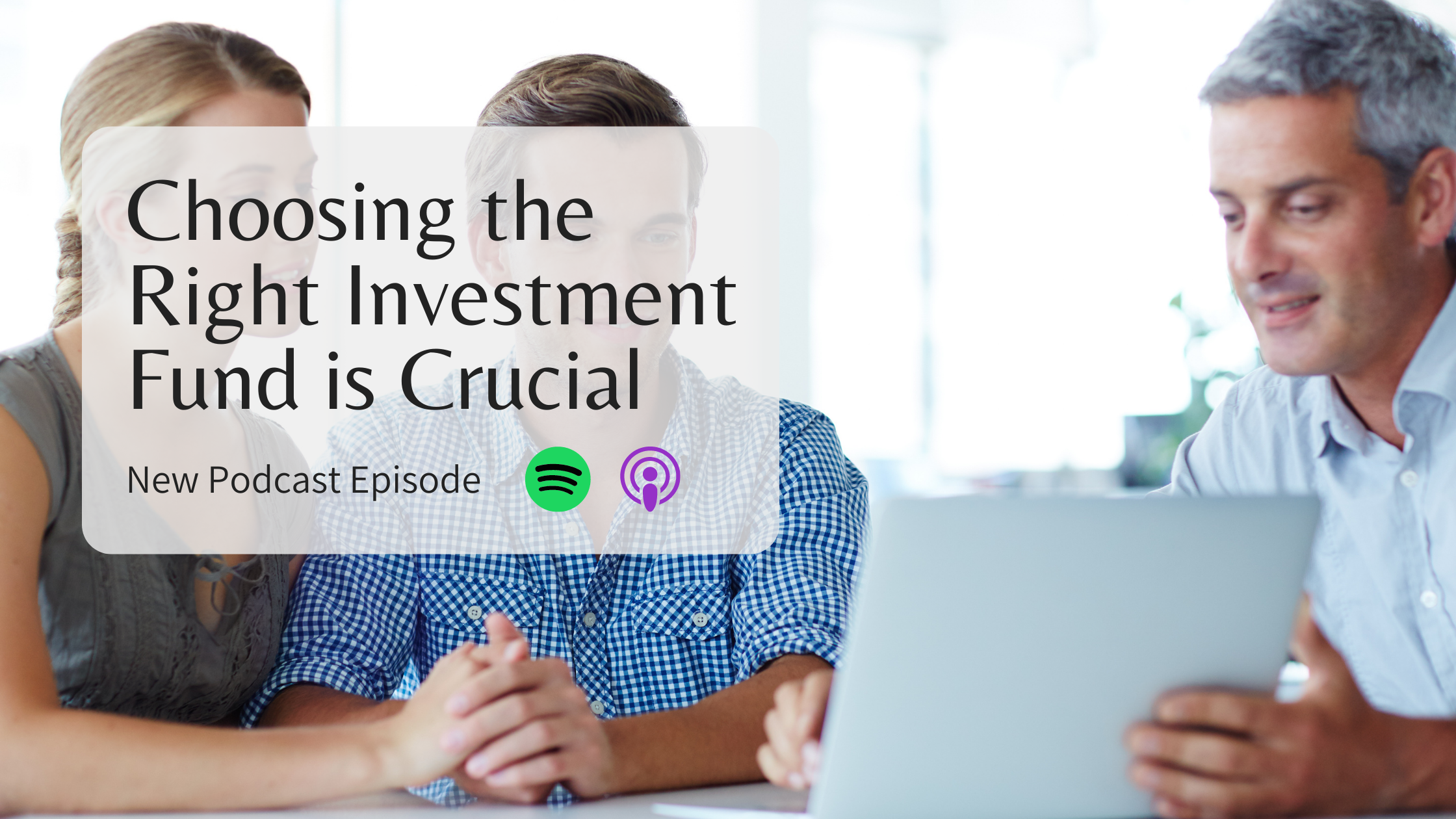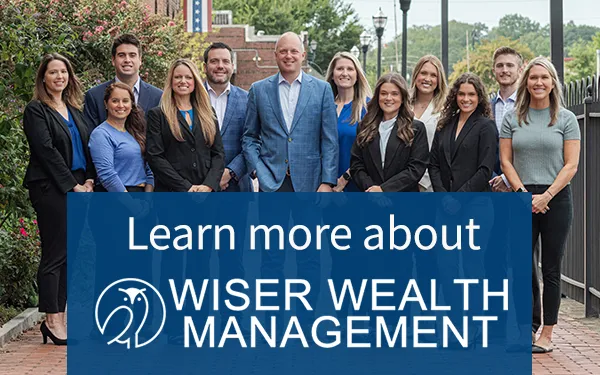
Choosing the Right Investment Fund is Crucial
On this episode of A Wiser Retirement Podcast, Casey Smith and Brad Lyons, CFP® talk about why choosing the right investment fund is crucial. They talk about the differences in the three big asset classes, how to pick an investment, trade volume, and give advice for the DIY ETF investor. It is important to understand how much risk you should be taking on inside your investment portfolio. You need to have a financial plan in place with set goals, and a plan to achieve those goals.
Listen on Apple Podcasts or watch on YouTube:
SUMMARY:
Different Asset Classes
The big three asset classes to invest in are stocks, bonds, and cash. Stocks can come in many forms, such as US stocks, international stocks, large company stocks, and small company stocks. These three different asset classes have varying expectations for their returns going forward. Each asset class has a historical rate of return as well as a historical standard deviation, and that is how we measure risk.
Protecting Your Portfolio
As you are approaching retirement, you should have about two years worth of cash set aside. This cash could be in your portfolio, in savings, or a combination of both. If the market were to tank, you then can go two years without having to liquidate any type of security. Having debt eliminated also allows you to protect your portfolio if the market were to crash. Prior to retirement, you also need to have an emergency fund in place, with enough cash set aside to get you through a difficult time.
Alternative Asset Classes
Real estate is fairly simple, you can buy a fund that is domestically focused or one that is internationally focused. Through REITs, you can buy into the publicly traded real estate market, and get those non-correlated returns.
Choosing the Right Investment Fund
Start with choosing the type of asset class. It is important to pick something with a solid reputation that has the financial strength to back their products and services. You need to look both qualitatively and quantitatively at the investment. When choosing an ETF, you should also look at the top 10 holdings, to see how it is made up. It is important to understand the index methodology of that fund, and know how the stocks got in the ETF.
Trade Volume
ETF.com can also show you trading volume. For larger investors, you want to make sure when you place your trade, that there are enough sellers on the other side to meet your trade. Trade volume is an indication of liquidity in the marketplace. Trade volume includes how easily you convert that ETF to cash or until you can buy another one, and also the liquidity of the ETF. You want a high trade volume with your ETFs.
Advice for the DIY ETF Investor
Look for ETFs that have reputable companies, are big enough (over 100 million dollars in assets), have the right fee structure, and avoid trading fees at all cost. Don’t just search for a fund based off rate of return, you’re looking for best fit. You need to find an ETF that best represents the asset class that you are looking for. It’s not about picking an ETF that has great performance, it’s about picking the asset class you want to be in, and then finding an ETF to then attach to the portfolio. That’s how you properly construct an ETF portfolio.
Download our white paper on “3 Ways to Grow and Protect Your Portfolio”
TIMESTAMPS:
0:00 Intro
2:01 Have a Financial Plan
12:30 Asset Classes
17:00 Protecting Your Portfolio
27:24 Alternative Asset Classes
37:05 Choosing the Right Investment Fund
42:39 Trade Volume
48:00 Advice for the DIY ETF Investor
LINKS:
Learn more about Casey Smith and connect with him on Twitter.
Learn more about Brad Lyons.
Learn more about Matthews Barnett.
CONNECT:
Twitter, Instagram, Facebook, LinkedIn, and YouTube.
Learn more about the Wiser Wealth Management Roundtable podcast and access previous episodes.
Share This Story, Choose Your Platform!
Wiser Wealth Management, Inc (“Wiser Wealth”) is a registered investment adviser with the U.S. Securities and Exchange Commission (SEC). As a registered investment adviser, Wiser Wealth and its employees are subject to various rules, filings, and requirements. You can visit the SEC’s website here to obtain further information on our firm or investment adviser’s registration.
Wiser Wealth’s website provides general information regarding our business along with access to additional investment related information, various financial calculators, and external / third party links. Material presented on this website is believed to be from reliable sources and is meant for informational purposes only. Wiser Wealth does not endorse or accept responsibility for the content of any third-party website and is not affiliated with any third-party website or social media page. Wiser Wealth does not expressly or implicitly adopt or endorse any of the expressions, opinions or content posted by third party websites or on social media pages. While Wiser Wealth uses reasonable efforts to obtain information from sources it believes to be reliable, we make no representation that the information or opinions contained in our publications are accurate, reliable, or complete.
To the extent that you utilize any financial calculators or links in our website, you acknowledge and understand that the information provided to you should not be construed as personal investment advice from Wiser Wealth or any of its investment professionals. Advice provided by Wiser Wealth is given only within the context of our contractual agreement with the client. Wiser Wealth does not offer legal, accounting or tax advice. Consult your own attorney, accountant, and other professionals for these services.





